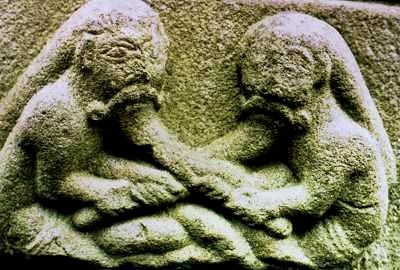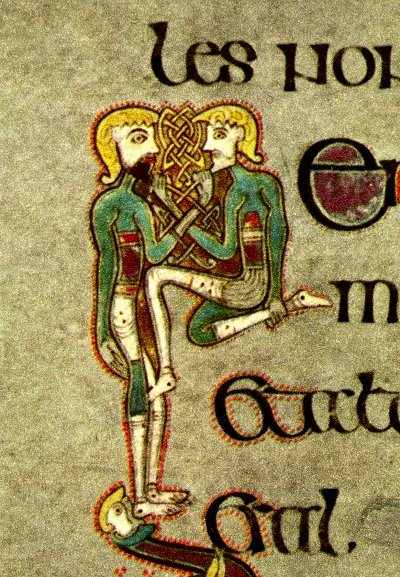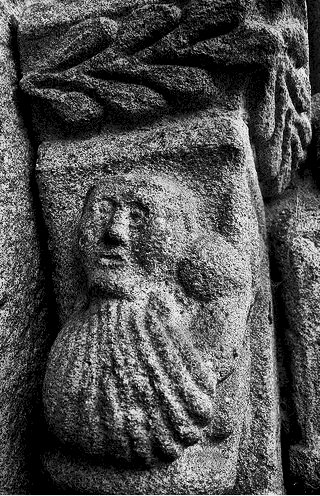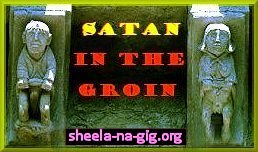Beards and Hair on an Irish Cross at Monasterboice (Louth)
and in the earlier Book of Kells (early 9th century).
|
Mutual masturbation and the accompanying guilt
was a common concern amongst celibate monks, but the beardpullers
on Muiredeach's Cross at Monasterboice do not seem to be monks,
since they have their hair (and perhaps their beards) in a kind of
bag worn by the rich and known as a tresse. These figures seem
therefore to represent luxury and strife - and very possibly represent
the poly-autonomous monastic Coptic-Celtic Irish church's anxiety
at being slowly and inexorably taken over and superseded by Continental
catholisicm.
Also on Muiredach's Cross at Monasterboice is a clever interlace of beards (below) symbolising - what ? - the companionship or the mortal danger lurking in the companionship of monks ?
And what are the cat-like lions doing underneath this panel - are they the hellish beasts so omnipresent on and in Romanesque churches ?
|
In the Book of Kells (f.253v) is an interesting pair of men each of whom holds the other's beard at the point where it becomes a single tendril or stem which becomes a typically insane piece of knotwork. Why one of them is holding his leg in such a surely significant manner is a mystery to me, though perhaps explained somewhere in the vast literature which has accrued around this and other Irish manuscripts.
Ithyphallic Norse statue of the male fertility god Freyr from roughly the same time.
|
Compare the picture above with a contemporaneous (or slightly earlier) carving at Meigle in Perthshire (Scotland).
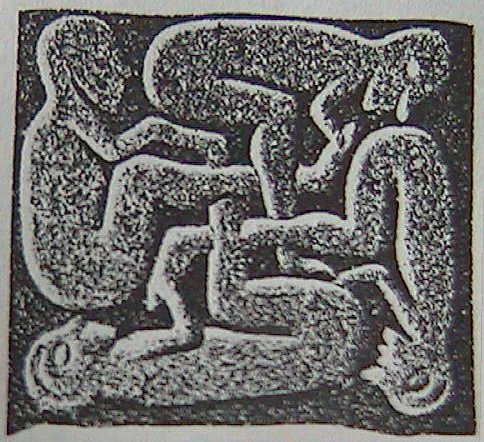
Click for beards on a remarkable 12th century Irish reliquary-shrine
>
Click for beard-pullers on several Romanesque capitals >
A wonderful beard which is also
a giant cockle-shell (emblem of St James)
on the church of San Marinha de Xinso la Limia in Galicia.
